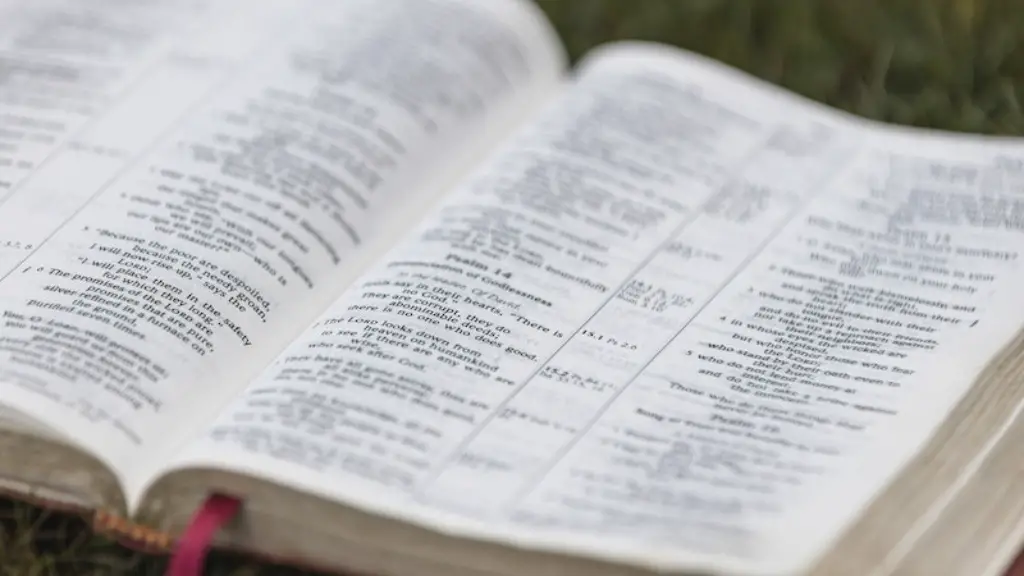What is an Elegy in Poetry?
An elegy is a form of poetry or literary work that is typically a lament or a tribute to the subject addressed. The word itself has Greek roots and is derived from the noun “elegos” which translates to “a song of mourning”. The word was also used by Pindar and other Greek literary figures who used it to describe poetry of a melancholic or sorrowful character, usually in reference to a departed loved one.
The allure of elegies is their emotive appeal. They are filled with deep sadness, longing, and veneration. Elegiac poets often employ a certain kind of figurative language that allows them to capture their sorrow with stunning visuals and remarkable lyricism. This has proven to be very effective for some of the famous elegiac poets like William Shakespeare and John Keats.
The structure of an elegy can be quite varied. Many elegiac works follow an inverse arc where the poem begins with wailing and sadness, gradually transitioning to a more lighthearted and optimistic tone. This approach is common in the classical form of the elegy, which was first developed by Greek elegists. Other structures, such as the inverted pyramid, are also popular among some elegists.
The content of an elegy can be divided into two distinct categories: reflection and celebration. Reflection is concerned with capturing the deceased’s memory in words while celebration focuses more on commemorating the life of the departed. Some elegies can even contain both elements as the poet pays homage to one’s passing and reminisces on happier times.
At the same time, elegiac poetry does not necessarily have to be about death. Elegists can write about a vast array of topics, such as lost love, times of joy, or grievances against society. In this sense, elegiac works are very versatile and allow poets to express a range of emotions with their words.
Elegies offer a powerful way to convey a message in a poignant and meaningful way. As the poet speaks of their love or grief, their words are carried on the wings of their emotions and have the ability to move and touch readers in ways that few other forms of poetry can manage.
Reflections of Lost Love
Reflection is an integral part of elegiac poetry. By revisiting memories of the lost one, the elegist not only brings the departed back to life in their words, but also allows the bereaved to process their grief in a meaningful way.
Coming to terms with loss is a difficult process, and writing about it in an elegy can make it easier. Through elegiac writing, the bereaved can reflect on the memories of their loved one, the joys and sorrows that they shared, and create a lasting record of the relationship.
It also gives readers an opportunity to relate to the elegist’s experience. By experiencing the elegist’s sorrow firsthand, readers can gain insight into life’s fragilities. This can bring them closer to the elegist’s feelings and allow them to grieve with them.
At the same time, elegies can also reflect on aspects of life and death that the elegist is unable to understand or accept. They can be seen as a form of reflection and contemplation, a dialogue between the elegist and their deceased, in which the elegist searches for peace and comfort amidst their sadness.
Veneration of Departed Souls
Celebration is another side of elegiac poetry. Whereas reflection mostly focuses on capturing the memories of the lost one, celebration is a way of honoring their life and expressing gratitude.
One of the main goals of elegiac poetry is to prevent the departed from being forgotten in the minds of the living. Elegies provide a way for the bereaved to perpetuate the memory of the one they lost, and therefore keep them alive in their hearts.
In this sense, elegiac poems can be seen as a way of staying connected to the departed and of paying homage to their life. By expressing gratitude and love, elegiac poets and readers can reminded of the joys and sorrows that the deceased brought to their life.
Elegiac poetry is also a powerful tool for healing. By describing the positive aspects of the one that was lost, the elegists are reminded of the good times and can begin to accept their loss. This can help them move on and look towards the future.
Figurative Language in Elegiac Poetry
Figurative language is one of the defining characteristics of elegiac poetry. By weaving together beautiful imagery and lyrical language, elegists are able to effectively convey their emotions.
In order to achieve this, elegiac poets often rely on metaphors, symbolism, and vivid imagery. For example, they may compare the intensity of their grief to that of a turbulent sea or the tumult of a raging storm. They may also employ death imagery, such as comparing their grief to a graveyard, or the sun setting on their sorrows.
Through their use of figurative language, elegists are able to create a tapestry of emotions that the reader can relate to, and often feel captivated by. This makes elegiac poetry emotionally powerful and captivating for readers.
The Power of Emotions in Elegiac Poetry
In order for an elegy to be effective, it must be imbued with strong emotions. While reflection and celebration can be integral elements of an elegy, they must be interwoven into the poet’s feelings in order for the poem to be truly successful.
Elegiac poets must be able to evoke emotions in their readers. This can be achieved through the use of vivid imagery and emotionally charged language. By leveraging the power of their emotions, elegists can create an alternate world that readers can access and relate to.
At the same time, elegies also provide a way for elegists to cope with loss. Through writing an elegy, they can process their feelings and gain closure. They can also offer solace to bereaved readers by reminding them of the power of hope and faith.
Celebrating Life Through Elegiac Poetry
At its core, elegiac poetry is about celebrating life rather than mourning death. By commemorating the memories of the beloved one, elegists are also celebrating the life that was shared. Through their words, elegists can make readers reflect on the memories of the departed and be reminded of how precious life is.
Elegies can also comfort readers by reminding them that life goes on. It is a reminder that even though people die, life continues and there is still hope. The elegist’s words provide solace and reassurance that their beloved one will not be forgotten, and that life will go on even though they are gone.
In this sense, elegiac poems embody the beauty of life and allow poets to capture the experience of passing in a meaningful way. Through their words, elegists can share a glimpse of the fragilities and transiency of life, and inspire readers to appreciate the moments they have.
Preserving Life Through Elegiac Poetry
Elegiac poetry is a way of preserving life in words and conveying a message of hope. By combining reflection and celebration, elegists are able to craft poems that capture the beauty of life, death, and all the moments in between.
It is a way of saying that life is fragile and that we must cherish the moments we have. It is also a way for elegists to cope with losses, find peace, and come to terms with their grief.
Elegiac poetry can bring comfort and solace to the bereaved and inspire readers to cherish life and never take it for granted. They provide a powerful emotional connection and offer a reminder of the importance of cherishing our time on earth.





